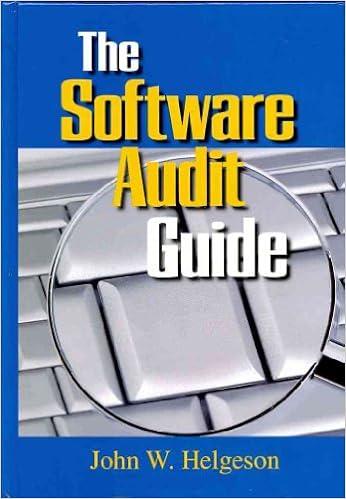Answered step by step
Verified Expert Solution
Question
1 Approved Answer
Please create balance sheet, income statement and cash income statement. Assumptions for Beginning Balance Sheet Assets: (1) Bonita has already purchased Inventory of $10,000 (2)
Please create balance sheet, income statement and cash income statement.

Assumptions for Beginning Balance Sheet Assets: (1) Bonita has already purchased Inventory of $10,000 (2) Bonita has already purchased $10,000 in equipment. (3)Bonita will also keep a $10,000 as a Beginning Cash Balance. Assumptions for Beginning Balance Sheet Liabilities & Equity: (1) Bonita will have Accounts Payables of $10,000 (supplier credit for the inventory). (2) Bonita's friend who owns a Fitness Equipment store has agreed to give Benny a 1 year loan for the equipment needed of $10,000 (10% annual interest rate this will be paid back with the interest at the end of year 1). (3) Bonita will put in $10,000 of her own money as owner's equity II. An Income Statement for Year 1: Assumptions: For Year 1: All sales will be cash sales (no credit sales). (1) Bonita forecasts that she will have 200 fitness class members paying a fitness membership of $500 annually). (2) Bonita will pay herself a fixed salary of $50,000 a year and will hire a student part-time assistant for a few hours a week. The assistant will be paid $10,000 a year. Bonita will pay a fixed payroll tax of 10% on total salaries, which can be deducted before taxes. (4)Bonita will pay rent and utilities amounting to $20,000 a year. (5) Annual Depreciation expense on the equipment will use simple straight-line depreciation with no salvage value for a 10-year life (6Bonita will pay an annual interest expense of $1,000 for her loan for the first year of her operations paid at the end of the year. (7) Income taxes on Earnings Before Taxes will be taxed at a 25% rate. III. Cash Income Statement (i.e. Annual Cash Budget for Year 1) Take the 1st year income statement and make adjustments for non-cash expenses; i.e. exclude depreciation expense as a non-cash expense, and include the repayment made for the loan (that's not allowed to be included under accounting rules in the income statement). The income statement will just show the interest expense for year 1 that is allowed to be deducted under accounting standards). Assumptions for Beginning Balance Sheet Assets: (1) Bonita has already purchased Inventory of $10,000 (2) Bonita has already purchased $10,000 in equipment. (3)Bonita will also keep a $10,000 as a Beginning Cash Balance. Assumptions for Beginning Balance Sheet Liabilities & Equity: (1) Bonita will have Accounts Payables of $10,000 (supplier credit for the inventory). (2) Bonita's friend who owns a Fitness Equipment store has agreed to give Benny a 1 year loan for the equipment needed of $10,000 (10% annual interest rate this will be paid back with the interest at the end of year 1). (3) Bonita will put in $10,000 of her own money as owner's equity II. An Income Statement for Year 1: Assumptions: For Year 1: All sales will be cash sales (no credit sales). (1) Bonita forecasts that she will have 200 fitness class members paying a fitness membership of $500 annually). (2) Bonita will pay herself a fixed salary of $50,000 a year and will hire a student part-time assistant for a few hours a week. The assistant will be paid $10,000 a year. Bonita will pay a fixed payroll tax of 10% on total salaries, which can be deducted before taxes. (4)Bonita will pay rent and utilities amounting to $20,000 a year. (5) Annual Depreciation expense on the equipment will use simple straight-line depreciation with no salvage value for a 10-year life (6Bonita will pay an annual interest expense of $1,000 for her loan for the first year of her operations paid at the end of the year. (7) Income taxes on Earnings Before Taxes will be taxed at a 25% rate. III. Cash Income Statement (i.e. Annual Cash Budget for Year 1) Take the 1st year income statement and make adjustments for non-cash expenses; i.e. exclude depreciation expense as a non-cash expense, and include the repayment made for the loan (that's not allowed to be included under accounting rules in the income statement). The income statement will just show the interest expense for year 1 that is allowed to be deducted under accounting standards)
Step by Step Solution
There are 3 Steps involved in it
Step: 1

Get Instant Access to Expert-Tailored Solutions
See step-by-step solutions with expert insights and AI powered tools for academic success
Step: 2

Step: 3

Ace Your Homework with AI
Get the answers you need in no time with our AI-driven, step-by-step assistance
Get Started


